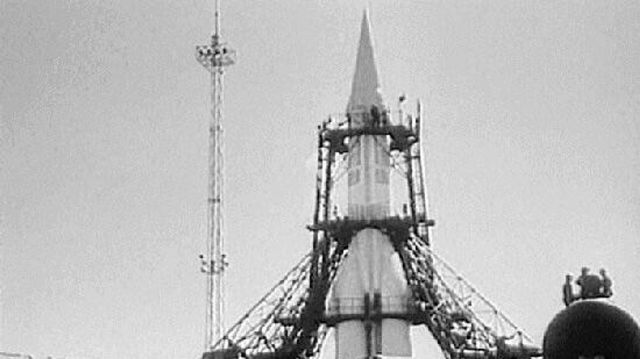Expert Zheleznyakov: the era of space for man began thanks to the Soviet rocket R-7 MOSCOW, Aug 21 – RIA Novosti.
The world's first rocket that flew to an intercontinental range, the Soviet R-7, was used as a weapon for a short time, but it was thanks to it that the space age of mankind began, and upgraded versions of the R-7 are still flying into space, expert, cosmonautics historian Alexander Zheleznyakov told RIA Novosti.
65 years ago, on August 21, 1957, the world's first launch of a ballistic missile at an intercontinental distance was carried out from the Baikonur cosmodrome (then it was called the Research Test Site No. 5 of the USSR Ministry of Defense). The world's first intercontinental ballistic missile (ICBM) was the R-7, developed at the Special Design Bureau No. 1 (OKB-1) under the leadership of Chief Designer Sergei Korolev.
At the same time, he clarified that the P-7 was not used for long as a deterrent weapon. It was replaced in the 60s by the R-9, R-16, R-36 and UR-100 missiles.
"On the basis of this rocket, a space carrier was created, which is still being operated in a modified form. These are rockets from the so-called legendary "Seven" series. The last of them are the Soyuz–2 in various versions. So, indeed, it was the conductor of the beginning of the space age of mankind and continues to play a significant role to this day," Zheleznyakov added.
The R-7 is a two-stage intercontinental ballistic missile with a detachable warhead. It carried a thermonuclear warhead and could deliver it almost anywhere in the territory of a potential enemy. The rocket has become not only a formidable new weapon, but also a base for creating a launch vehicle for launching spacecraft and ships into space, including manned ones.
The R-7 rocket was preceded by the creation of single-stage ballistic missiles R-1, R-2, R-3 and R-5, which were also led by Korolev. A government decree officially setting the task of creating a ballistic missile capable of carrying a thermonuclear charge to an intercontinental range was issued on May 20, 1954.
The first rocket launch took place on May 15, 1957, but it ended unsuccessfully due to a leak in the fuel line of the fuel. The second launch never took place due to a malfunction of the central block engines, and the third launch on July 12, 1957 ended at 33 seconds of flight when the rocket lost stability and deviated from the set trajectory. The cause of the accident was a short circuit on the housing of the control signal circuits of the integrating device through the rotation channel.
Only the fourth launch of the R-7 rocket on August 21, 1957 was successful - the rocket reached the target area for the first time. The 8K718 product (as the rocket was called in the technical documentation) with the M1-9 head unit launched from Baikonur (Tyuratam polygon), worked out the active part of the trajectory, and the head unit fell into a given square in Kamchatka.

